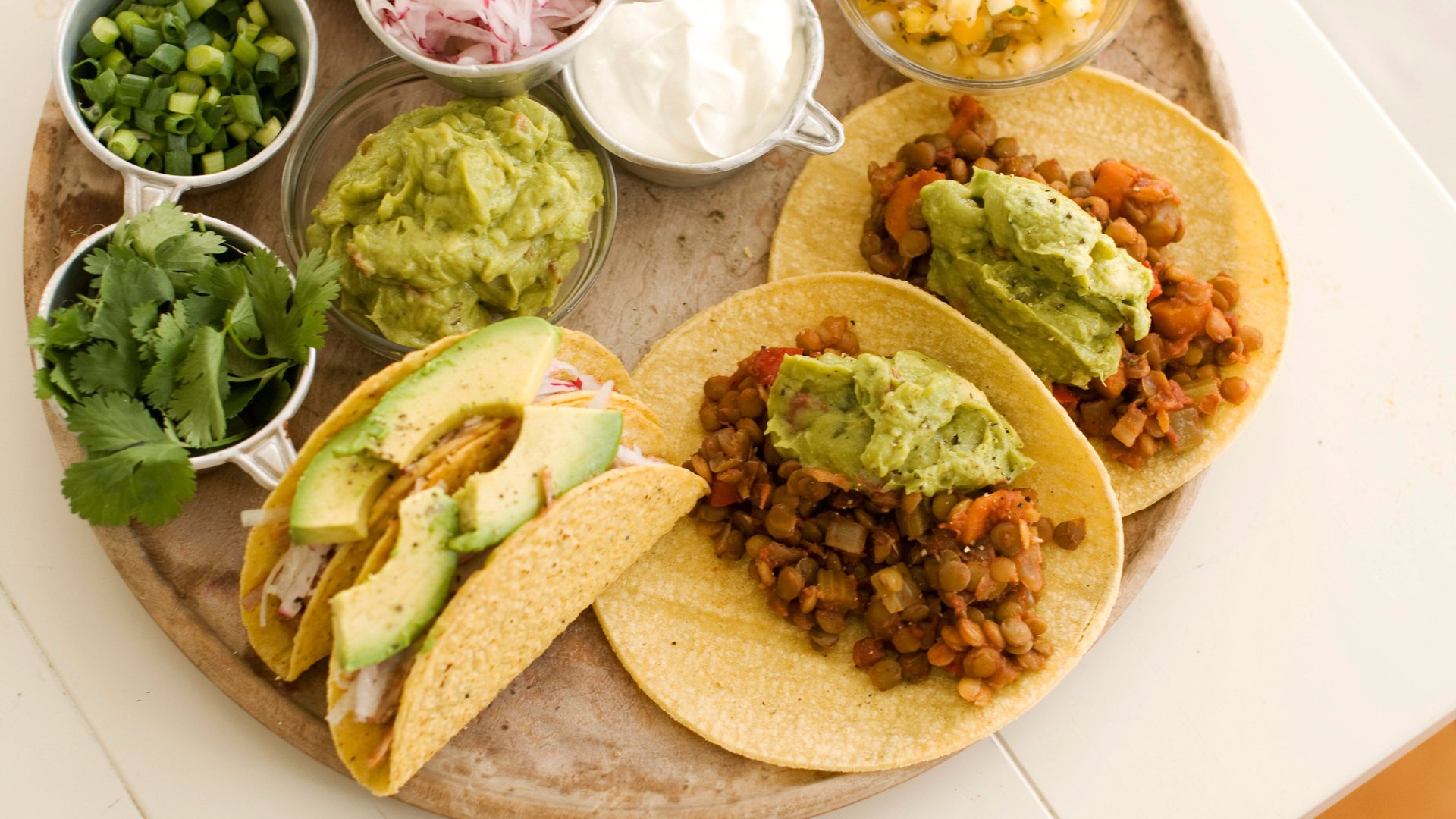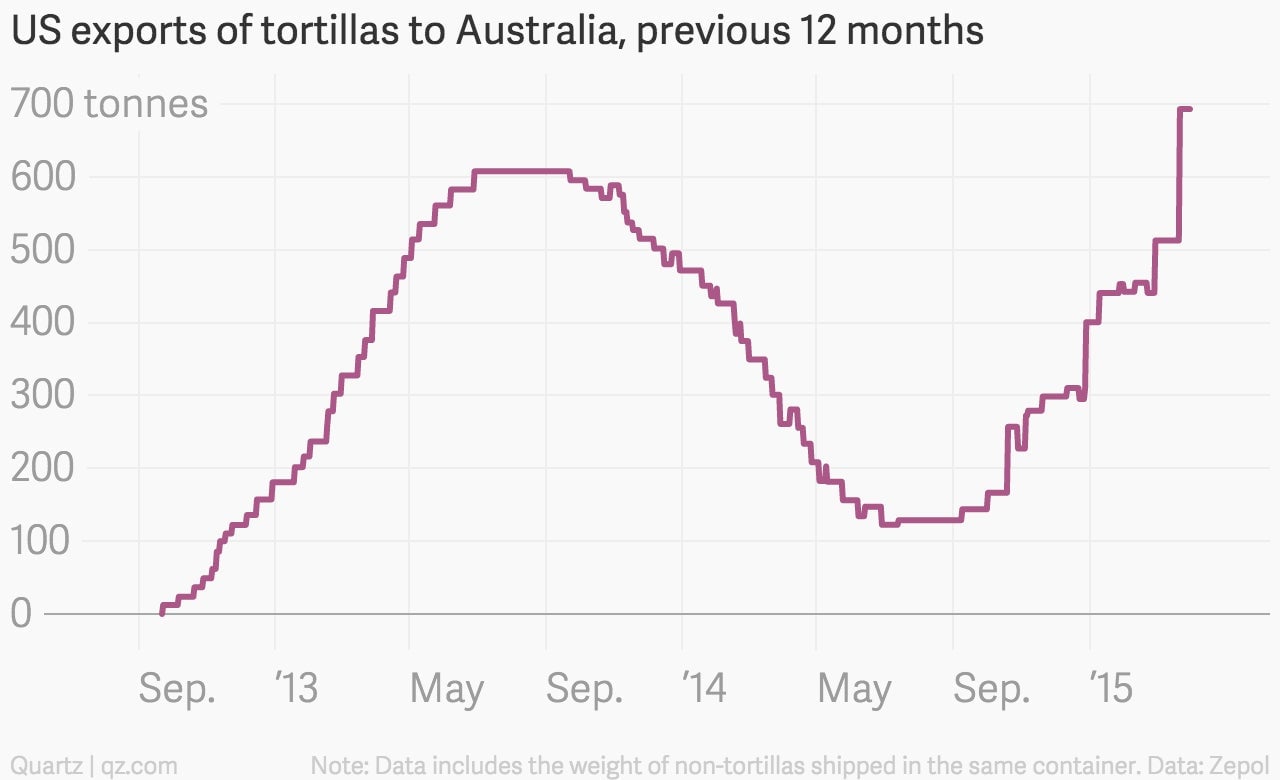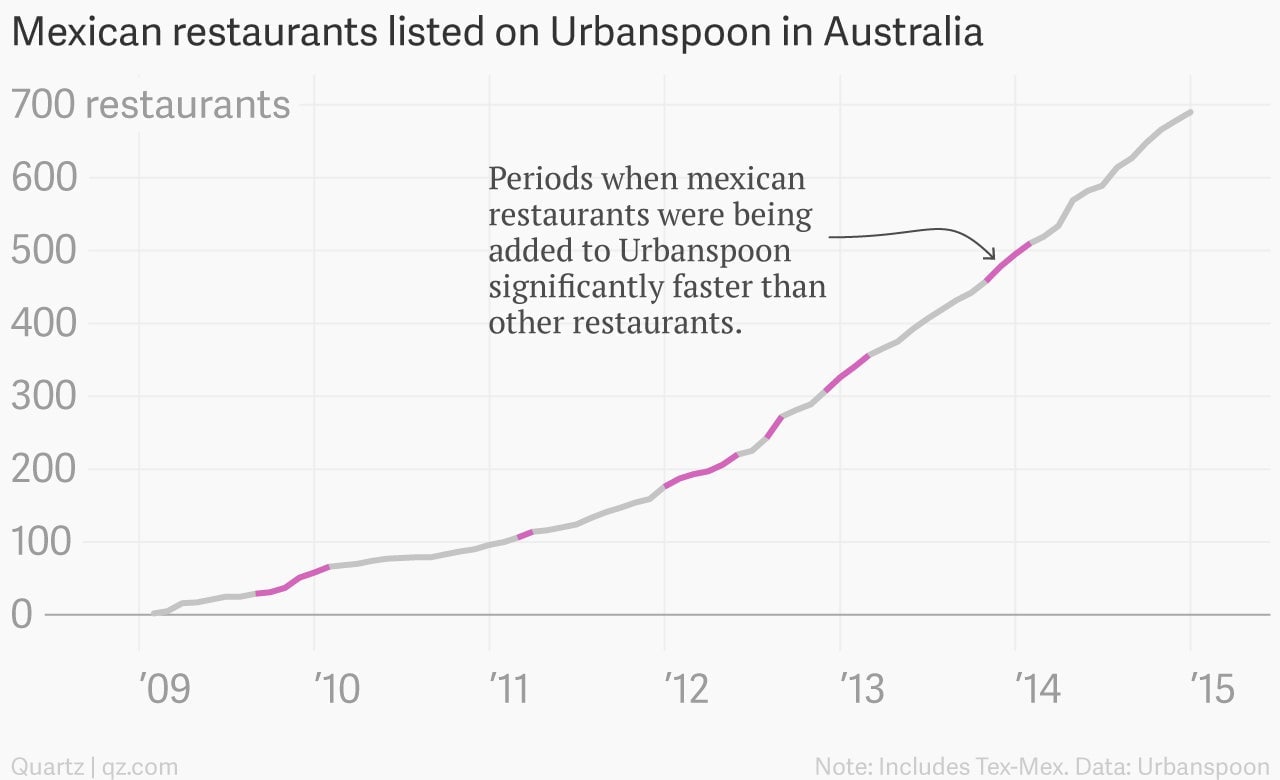Australia is going taco crazy
Australia is in the middle of a Mexican food explosion. Last year the United States shipped more tortillas to Australia than ever before, with demand emerging from essentially zero in 2013:


Australia is in the middle of a Mexican food explosion. Last year the United States shipped more tortillas to Australia than ever before, with demand emerging from essentially zero in 2013:

While demand waned after the initial surge, this year is poised to set new records. In the 12 months that ended in March, US businesses exported 700,000 kilos of tortillas to Australia, according to bill of lading records collected by Zepol. There were no shipments listed in the database through most of 2010 to 2012.
(Quartz looked at all bills of lading containing the word “tortilla” but not containing the word “chip” or the phrase “tortilla flour” and calculated the cumulative weight from what was listed on the bill. Because individual item weights are not reported on a bill of lading when a container carried more than just tortillas, the entire weight of the container was used.)
At the other end of these exports are Australian business that are buying up the taco shells and burrito casings to serve to the Australian public:

The “Mexican wave” described in 2012 by Australian food site goodfood has turned into the tsunami it predicted. In less than two years, the number of Australian-based Mexican and Tex-Mex restaurants listed on Urbanspoon has more than doubled from 326 restaurants in 2013 to 690 in 2015. The tourism bureau of Melbourne touts the city’s taco culture on its website.
The recent enthusiasm has also spurred the local manufacturing of Mexican staples. Cesar Duran, managing director at El Cielo Foods, a manufacturer of Mexican foodstuffs in Melborne, told Quartz that when he and his partners launched three years ago, they supplied only five restaurants. Now they service 300 across Australia.
The source of the surge, like most trends, is hard to pin down. But plenty of people have theories. With a clime comparable to Mexico and the Southwest coast of the US as well as cultural similarities stemming from coastal and surf lifestyles, “you can sense the California” in Australia, according to Duran.
At least one globally operating company has taken notice. Greg Creed, CEO of Yum Brands, has indicated that he’s considered re-establishing his company’s Taco Bell restaurants in Australia, which had failed in a previous attempt, after experiencing a new, vibrant food scene in Brisbane.
Duran sees Australian demand for Mexican food growing for the next two or three years before leveling off: “The market is quite small. It looks like a big country, but it’s still just 24 million people.” Duran is focused on beating the importers on quality. “Tortillas are about making them fresh,” he said. As the bills of lading indicate, many shipments of US tortillas are sent to Australia frozen.
But even if Duran can stem the flow of imports and meet domestic demand with his tortillas, the US won’t be completely shut out of the business. All of the corn El Cielo uses in their tortillas is imported from US farms.